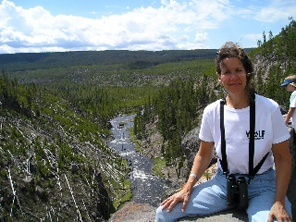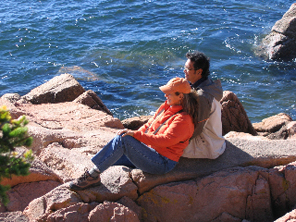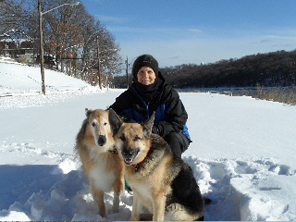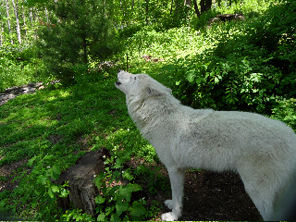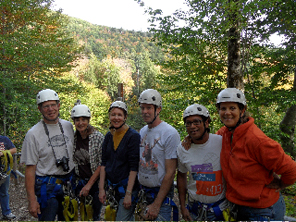Q&A’s
FAQ’s from young writers and readers
How did you become an author?
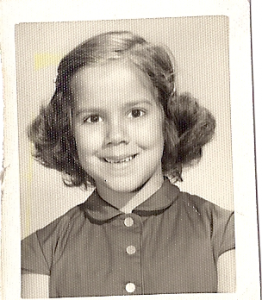 It didn’t happen all at once. Here’s part of the journey…
It didn’t happen all at once. Here’s part of the journey…
When I was a little girl, I used to love to lay in the hammock in my backyard, look up at the sky, sing, and daydream. I also loved to go to the library with my mom (my library card was made out of thick paper, not plastic!), and to play “make-believe” and with my dolls with my best friend, Donna. I had a vivid imagination and made up stories, but I didn’t write them down…. yet. At that age, I hadn’t thought about becoming an author.
I fell back in love with books (children’s) when I became an elementary teacher. I LOVED to read everyday with my students. That’s when I started writing again. I was very lucky to study writing with some great teachers. I took classes and workshops with Ralph Fletcher, Lucy Caulkins, Cynthia Rylant, and many others. I joined several writers’ groups and started keeping a writer’s notebook.
As a writer, I started to pay attention to the world around me in a new way. Writing what I noticed, thought about, wondered, and felt…. all of it went in my notebook. The writing of stories, poems, and songs followed. I took the ideas from my notebooks and “grew” them into bigger projects.
The first story that was published was:
I Know A Shy Fellow Who Swallowed A Cello. When I received the phone call from the publisher asking if I’d like the story to be published as a picture book, it was so exciting! Of course, I said, “Yes”, and the process began. This is one of the things I share in my author presentations when I visit schools.
Many of the books I’ve written are non-fiction. Writing non-fiction involves most of the same steps as writing fiction. It usually requires more research, which is part of the fun! There’s always SO MUCH to learn.
Because I enjoy learning new things, I attend workshops and conferences, and I belong to several writing groups and organizations. We share our writing and get suggestions and feedback from each other. Attending these meetings and writing workshops helps me to become a better writer. So does reading. The best advice I can offer to become a writer is to make time to write (and read) every day, even if it’s for 15 minutes. That’s how writers are created!
When did you start to write?
When I was a student in school, I enjoyed writing. I started a diary, after I read the Anne Frank story. I addressed it to “Dear Candy”, a name I made up with my best friend. (Her secret name was “Terry”.) I also wrote poems and short stories, but didn’t think about becoming an author until later.
When I started to teach, I fell back in love with children’s books and stories– picture books, novels, poems, etc. Keeping a writer’s notebook got the ball rolling and then I started to write my own stories again. In July 2001, I went to a writing workshop and submitted my story to one of the editors. In the fall of that year he accepted the manuscript of I Know A Shy Fellow Who Swallowed A Cello. …. and that was it! I was hooked!
What is the favorite book that you wrote?
Hmmmm…. That’s a tough one. I Know A Shy Fellow Who Swallowed A Cello was SO MUCH FUN to write! It took lots of time to pick the best words I could find to rhyme, and to show all the action that took place. I used my rhyming dictionary, word menu, dictionary, and thesaurus. I also love how John O’Brien illustrated I Know a Shy Fellow…..
Wolves and Their Ways was another favorite because I am so passionate about animals, and wolves in particular. They are such amazing animals!
My story, Snow Sky, hasn’t been published yet, but I feel strongly about this story. It’s a gentle, quiet story, inspired by OWL MOON by Jane Yolen.
How much time does it take to write a book?
It depends on the book. A non-fiction book requires more planning and research. That’s all part of the writing process.
When I wrote Endangered Sea Life, for example, I had a deadline. I had to do all the research, planning, writing, and re-writing in six weeks. That’s because the publishing company I worked for needed the book by a certain date. Other times it can take weeks, or months (even years!) to write a book.
If you are writing a poem, even though there aren’t as many words as in a novel, a picture book, or a magazine story, you still need to write it, re-read it, and revise it, to make it the best it can be. That takes time.
Where do you do your writing?
I write wherever I get an idea. That could be when I’m taking my dogs for a walk in my neighborhood, going bird watching, or visiting my mom. Carrying a mini-writer’s notebook comes in handy at those times. I try to have something to write with and write on wherever I am.
When I’m ready to get serious about writing a first draft, then I work on my laptop. Computers make it easier to create stories because it is so much easier to revise and edit. (I’m actually answering these questions while I am waiting in the doctor’s office!)
If I don’t have paper and a pen, and I have my cell phone, I sometimes call my self on my home phone and talk my story or song idea into the voicemail or into my mini-disk recorder! I’ve even written down ideas for stories or songs on napkins and the back of a fudge box!
What are your dogs’ names?
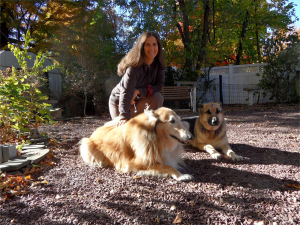 I’ve had six dogs in my life. Ginger was my first dog, when I was a little girl. Aztec (also known as “Poochie”) was my dog when I was in college. Ranger came to live with my husband and me when I moved to my first house on Long Island. Mae moved in when we moved to our new house. Now, we have Julie and King. They are the dogs you see above and on the About Barbara Bio page. They are funny, sweet, and really good buddies and they make me laugh!
I’ve had six dogs in my life. Ginger was my first dog, when I was a little girl. Aztec (also known as “Poochie”) was my dog when I was in college. Ranger came to live with my husband and me when I moved to my first house on Long Island. Mae moved in when we moved to our new house. Now, we have Julie and King. They are the dogs you see above and on the About Barbara Bio page. They are funny, sweet, and really good buddies and they make me laugh!
Why do you only wear one earring?
I only have one ear pierced! I guess it represents my gypsy spirit.
What are your hobbies? What do you enjoy doing in your spare time?
Well, you know I like to write, and that started out as a hobby.
Bird-watching and hiking are two of my favorite things to do. I enjoy taking my binoculars to a nature preserve, sanctuary, or refuge, and my own back yard, looking for whatever birds are there, or looking for a particular bird. It is like a treasure hunt. I write down the birds that I see, where I see them, and when. I also write down details of what I notice to help me remember the bird the next time I see that same species. It’s not as easy as you might think.
My idea of a great weekend or vacation is going to the mountains or to the beach to walk and hike (and read, write, swim, look at the fall leaves or for shells…..).
I like to read and watch movies. I also enjoy cooking (I love to make soup) and baking (My specialties are chocolate chip, oatmeal and “comps and doles”. That is the name my nephew gave my butter thumbprint cookies. Comps have raspberry jam and doles have apricot!)
This year I started a vegetable garden with a friend and it was exciting to see things grow. It was hard work and we got to eat LOTS of fresh, organic veggies!
One of my most favorite things to do is to take a walk with my husband and the dogs, Julie and King. They are my “pack”.
What was the first story you wrote?
The first story I wrote (as an adult) is called Gramps, a story about my grandfather who used to live with my family. The story wasn’t published, but it got me started and excited about writing again.
The first story that was published was I Know A Shy Fellow Who Swallowed A Cello. When I received the phone call asking if I’d like the story to be published as a picture book it was so exciting! Of course, I said yes, and the process began. This is one of the things I share in my author presentations when I visit schools.
How many books have you written?
I’m not exactly sure… well over a hundred stories. Fourteen of the children’s have been published. I’ve also written songs (for kids and adults), poetry, magazine stories, and a novel (that’s not finished yet.)
What are the names of the books that you’ve published?
I Know a Shy Fellow Who Swallowed a Cello, Underwater Cities – The Coral Reefs, Wolves and Their Ways, Endangered Sea Life, The Underwater Life of Rivers, Backyard Birds, Sharks, Balto, the Sled Dog, Do You See Me?, South Korea, A Guide Dog Comes To Class, Jessie, the Guide Dog, From a Treehouse, and The Kittens.
What else have you written?
I wrote and produced an original song, which accompanies I Know A Shy Fellow Who Swallowed A Cello and an Educator’s Resource and Activity Guide that also complements the book.
The teacher’s resource manual I co-authored is called, 12 Take-Home Thematic Backpacks.
“Michael MacGregor Sure Can Snore” is a story that appeared in Highlights Magazine.
AMPLE PATIENCE is the name of the CD, which has 14 of my original songs on it. Most of the songs are for adults on this CD, though one song, called ONE VOICE, is for everyone. It’s about needing to care for our earth and all of its inhabitants. I wrote it on a djembe, an African drum.
It was exciting to write both words and music for these songs and I sing and play the guitar, as well.
What do you like about writing?
When I re-started writing (I wrote when I was in school and then didn’t do it for awhile.), I was very lucky to study writing with some great teachers. I took classes and workshops with Ralph Fletcher, Lucy Caulkins, Cynthia Rylant, and many others. I joined several writers’ groups and started keeping a writer’s notebook. I started to pay attention to the world around me in a new way. Writing what I noticed, thought about, wondered, and felt…. all of it went in my notebook. The writing stories, poems, songs followed. I took the ideas from my notebooks and “grew” them into bigger projects.
Writing non-fiction, while different in some ways, still involves most of the same steps as writing fiction. It usually involves more research, which is part of the fun! There’s always SO MUCH to learn.
Why is revision so important? Isn’t revision a waste of time? Isn’t revision just too much work? Is revision a secret plot by teachers to make us work harder?
Even though it can take time, I really enjoy the process of revision. Putting down the basic ideas and words for a story is only the beginning. That’s the rough draft, sloppy copy, or “sketch”, just like an artist’s sketch, only with words.
What’s great about being a writer is that you get to go back and “RE-VISION” your work and then make new choices. You can add or take out words, sentences, paragraphs, or pages. At one point, my story, Snow Sky, was 7 pages. Now it is less than 4! You can change the setting, add a new twist, introduce a new character to enter the story, etc.
When you start a story, you may not know all that is going to happen. As you write, you are in the driver’s seat and get to take your story to the destination you decide.
So, the next time your teacher suggests that it’s time to revise your work, imagine it’s like having the chance to get up to bat again!



